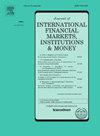主要加密货币波动的好坏对比:二分法和关联性驱动因素
IF 5.4
2区 经济学
Q1 BUSINESS, FINANCE
Journal of International Financial Markets Institutions & Money
Pub Date : 2024-10-01
DOI:10.1016/j.intfin.2024.102062
引用次数: 0
摘要
与传统金融资产相比,加密货币具有独特的统计和动态特性,因此研究其波动性对投资组合经理和交易者至关重要。我们研究了具有代表性的八种主要加密资产的波动性关联动态。在方法上,我们将测量的波动率分解为正负两个部分,并采用时变参数向量自回归(TVP-VAR)框架来显示与市场繁荣和衰退相关的独特动态。我们的研究结果表明,与传统金融市场相比,加密货币的连通性反映了重要事件并大幅波动,同时达到较低的极限值。关联度极高或极低的时期显然与加密货币市场的特定事件以及宏观经济或货币历史有关。此外,现存的好坏波动不对称现象表明,市场下滑的蔓延速度远远快于可比的市场飙升速度。总体而言,连通性动态是由加密货币(动量、链上活动、链下活动)和传统金融与经济(金融与经济不确定性、金融市场表现)因素共同驱动的,而不对称则与链下加密货币活动以及经济、金融和货币因素的结合联系更大。在总体关联性和不对称性模型中,这些都可以作为实践指标,进一步转化为具体的投资组合再平衡决策、风险管理和监管框架。本文章由计算机程序翻译,如有差异,请以英文原文为准。
Good vs. bad volatility in major cryptocurrencies: The dichotomy and drivers of connectedness
Cryptocurrencies exhibit unique statistical and dynamic properties compared to those of traditional financial assets, making the study of their volatility crucial for portfolio managers and traders. We investigate the volatility connectedness dynamics of a representative set of eight major crypto assets. Methodologically, we decompose the measured volatility into positive and negative components and employ the time-varying parameters vector autoregression (TVP-VAR) framework to show distinct dynamics associated with market booms and downturns. Our findings indicate that crypto connectedness reflects important events and oscillates substantially while reaching lower limit values when compared to traditional financial markets. Periods of extremely high or low connectedness are clearly linked to specific events in the crypto market and macroeconomic or monetary history. Furthermore, existing asymmetry from good and bad volatility indicates that market downturns spill over substantially faster than comparable market surges. Overall, the connectedness dynamics are driven by a combination of both crypto (momentum, on-chain activity, off-chain activity) and legacy financial and economic (financial and economic uncertainty, and financial market performance) factors, while the asymmetry is more connected to the off-chain crypto activity and the combination of economic, financial, and monetary factors. In both the total connectedness and asymmetry modeling, these can serve as hands-on indicators to be further translated into specific portfolio re-balancing decisions, risk management, and regulatory frameworks.
求助全文
通过发布文献求助,成功后即可免费获取论文全文。
去求助
来源期刊
CiteScore
6.60
自引率
10.00%
发文量
142
期刊介绍:
International trade, financing and investments, and the related cash and credit transactions, have grown at an extremely rapid pace in recent years. The international monetary system has continued to evolve to accommodate the need for foreign-currency denominated transactions and in the process has provided opportunities for its ongoing observation and study. The purpose of the Journal of International Financial Markets, Institutions & Money is to publish rigorous, original articles dealing with the international aspects of financial markets, institutions and money. Theoretical/conceptual and empirical papers providing meaningful insights into the subject areas will be considered. The following topic areas, although not exhaustive, are representative of the coverage in this Journal. • International financial markets • International securities markets • Foreign exchange markets • Eurocurrency markets • International syndications • Term structures of Eurocurrency rates • Determination of exchange rates • Information, speculation and parity • Forward rates and swaps • International payment mechanisms • International commercial banking; • International investment banking • Central bank intervention • International monetary systems • Balance of payments.

 求助内容:
求助内容: 应助结果提醒方式:
应助结果提醒方式:


